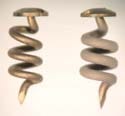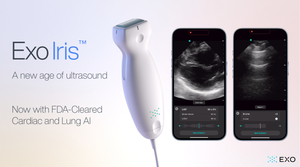June 7, 2004
Originally Published MPMNJune 2004
INDUSTRY NEWS
Implantable Devices Go Deeper with Surface Treatments
Melody Lee
|
Impantable coils to treat retinal diseases are coated by SurModics with a drug-eluting material. |
OEMs that want to take their products to a deeper level--as in, deeper into the human body--often start with a surface coating to make the devices safe and biocompatible. The chosen coating technology could also include drug-delivery or antirestenosis properties.
Advanced Materials Components Express (AMCX; Bellefonte, PA; www.amcx.com)is focusing efforts on getting its surface coating approved for use on implantable devices.AMCX's treatment already beats Teflon and parylene in hardness and adhesion, according to the company. It is currently used in treating hypodermic and DNA-testingneedles, in serum and blood sampling, and microfluidics.
"We haven't marketed it as [being used on implantable devices] yet, but that's our target," says Dona Parrotte, AMCX's director of business development. "AMC148-18 has the lowest nonspecific protein-binding surface available. One of the problems with a nonstick coating such as Teflon is thatit doesn't stick to anything," she says. "We have
accomplished this same surface energy, but made it bondable."
Used on metal, stainless-steel, and ceramic devices, the treatment is resistant to most chemicals, solvents, and acids. It is routinely applied to deep, small-bore inside diameters and creates a uniform conformal surface. According to AMCX, onceapplied, it cannot be removed without partial destruction of the substrate.
A refractive index close to that of water makes it optically transparent. If the surface treatment is going to be applied to glass in applications such as slides, petri dishes, or sampling ampules, transparency gives users a maximum visual of what is being studied. A clear coating also gives the part a clean, finished look.
|
AMCX's coating already |
"By the end of the year, we'd like to have someone test [the surface] and say that it works well on implants," says Parrotte. "Then we can proceed with managing the cost to get FDA approval. We're also interested in talking to people about collaborating for this launch."
The collaboration AMCX is looking for may be similar to the recent partnership between SurModics Inc. (Eden Prairie, MN; www.surmodics.com)and InnoRx Inc. (Mobile, AL). Drug-delivery system developer InnoRx is creating an implantable coil to treat a number of retinal diseases. The product uses SurModics's coating technology to release therapeutic agents into the eye. InnoRx is conducting animal studies in the first half of this year, with human clinical trials planned later in the year.
While InnoRx is in charge of the coil's development, SurModics is providing the coating. The polymer is similar to the one used on the Cypher stent, which releases drugs within the first few months after angioplasty. The collaboration with InnoRx is SurModics's first venture into the ophthalmology area.
"InnoRx wants to deliver drugs into the eye for maladies that often need to be treated with drugs for more than one year," says Phil Ankeny, vicepresident, business development and CFO of SurModics. "We've taken the same polymer system [used on the Cypher stent] and adapted it to work with a different drug to deliver into the eyes. Given ourexperience with FDA in dealing with our proprietary coatings, we were able to provide assistance in that area as well."
Copyright ©2004 Medical Product Manufacturing News
You May Also Like




